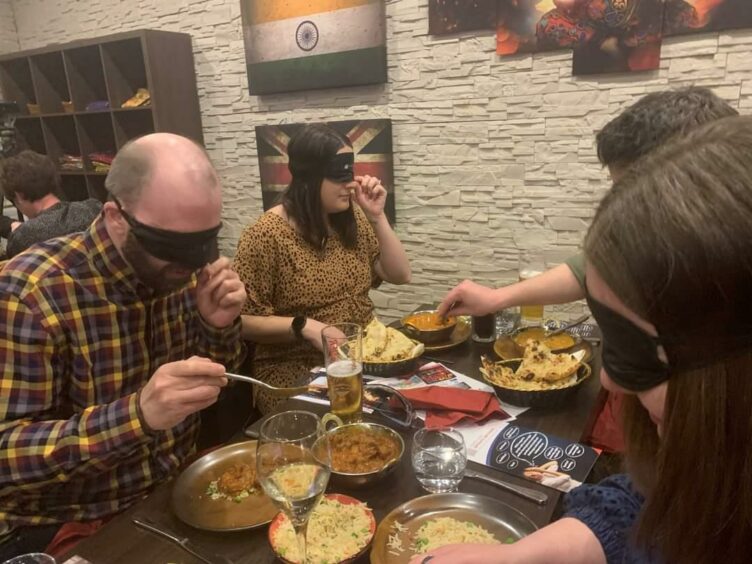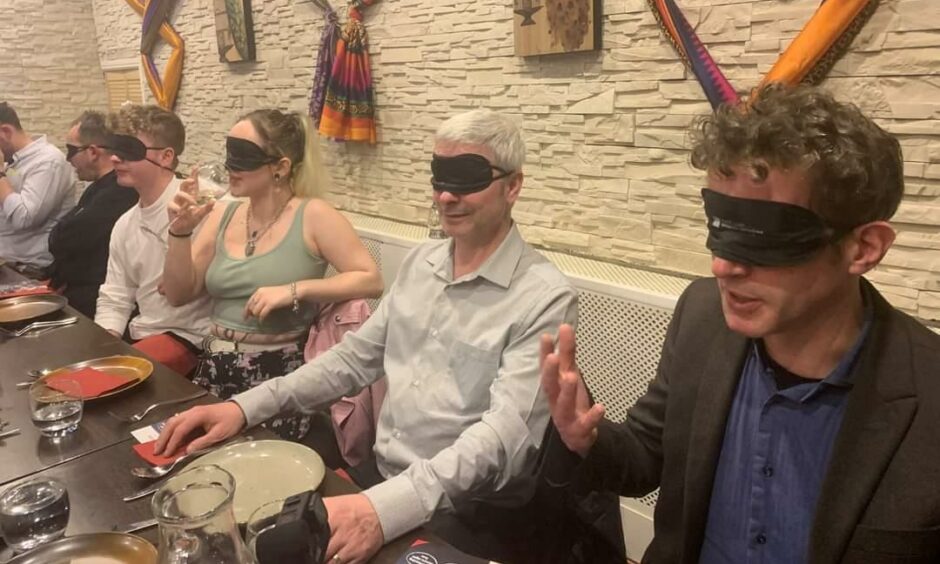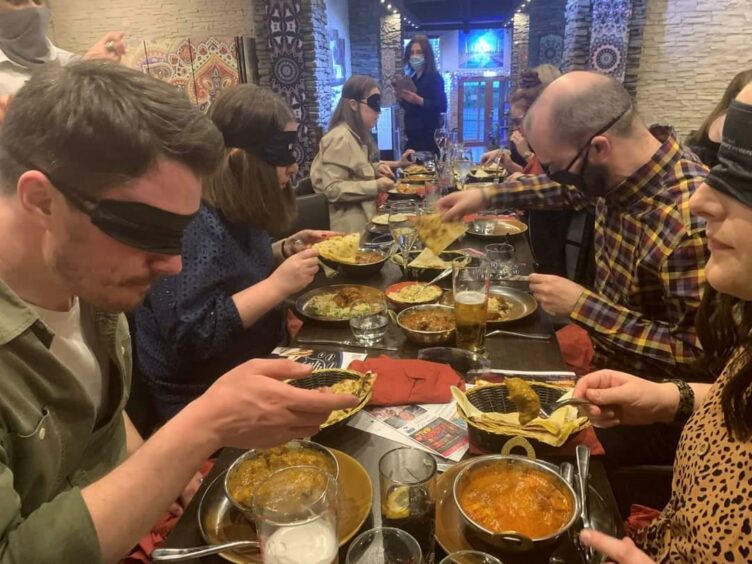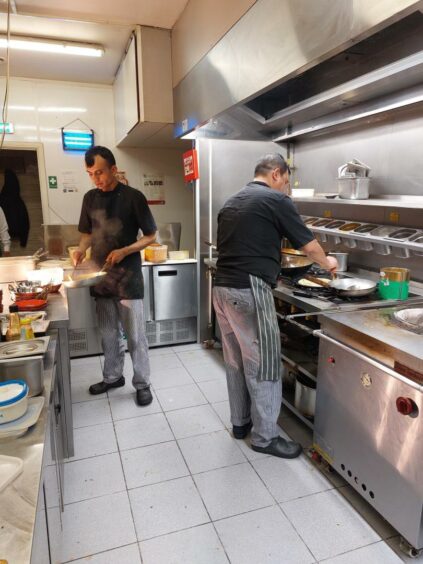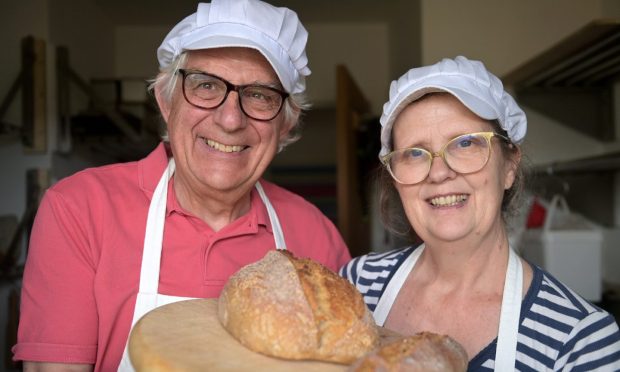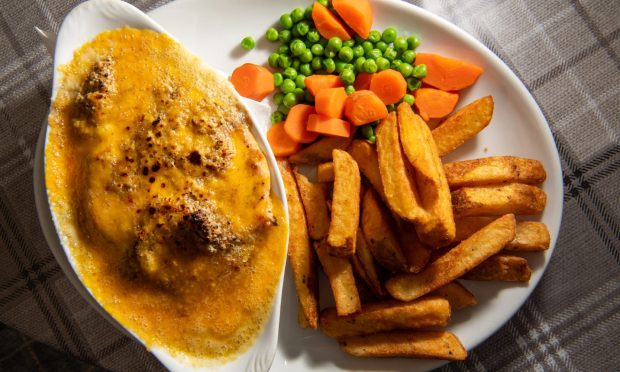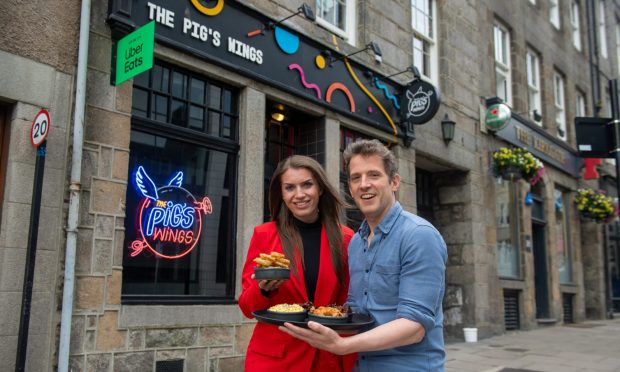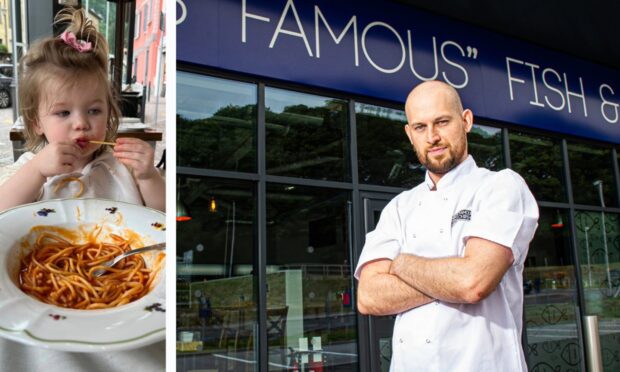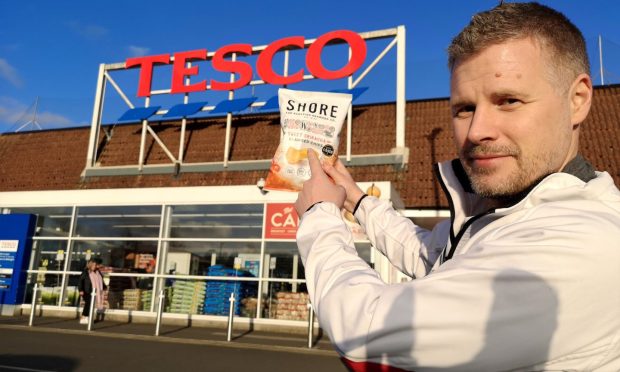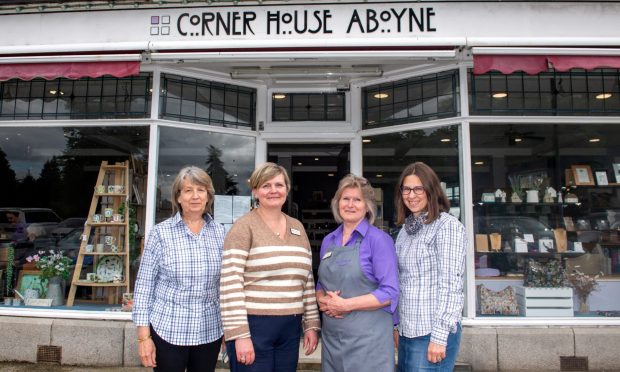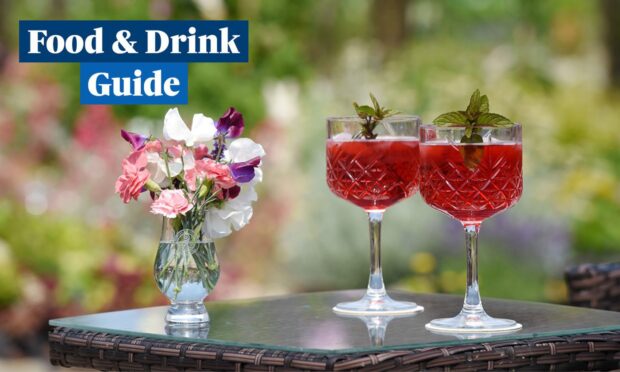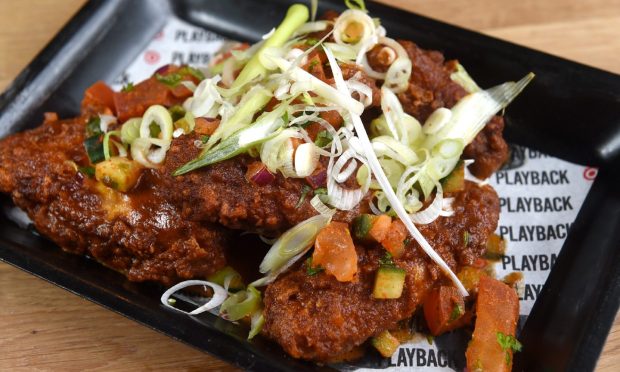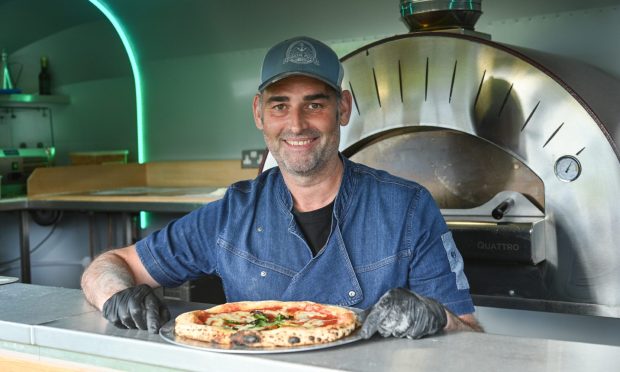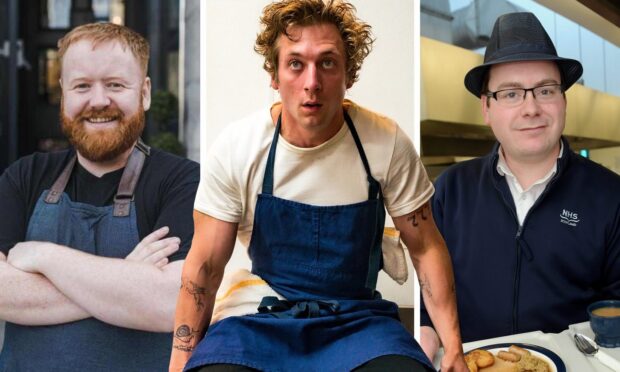I was warned that dining with a blindfold on could cause an adverse reaction – but I wasn’t prepared for what happened to me at Aberdeen’s Namaste Delhi.
I was invited to the Bridge Street restaurant by Lynn Batham and Libby Hillhouse.
They are part of North East Sensory Services (NESS), a charity that works with the visual and hearing impaired. Lynn and Libby were restarting their Dining in the Dark evenings after a lockdown hiatus and asked if I’d like to join.
Absolutely! I said. The event aims to give a small insight into the challenges faced by the sensory impaired and sees diners spending the meal completely blindfolded. Sounds like fun, right?
Sensory overload
Speaking to Lynn before the event, the warning signs were there.
She told me some people could find the experience discombobulating. The loss of sight can do strange things to the brain.
“Wait, what?” I asked. This was intriguing. “Has anyone panicked and run from the room?”
“No,” said Lynn with a laugh. “That hasn’t happened. Not yet anyway.”
The Leslies arrive at Dining in the Dark
I get to Namaste early to set up the video cameras, my editor thought that the one thing Aberdeen is in need of at the moment is footage of me attempting to eat a curry blindfolded.
As I finish setting up, my table companions for the evening arrive – the delightful Leslie family, whose oldest son, Ryan, is a tech consultant for NESS.
Ryan visits visually impaired people all over the north-east to teach them how to use the latest support gadgets.
He tells me about the latest marvel – a camera that clips on to spectacles that reads and then verbalises words on a page picked out by the wearer’s finger.
Ryan’s mother Angela is opposite me. Her own mother has retinitis pigmentosa, a progressive eye disease that eventually narrows vision into a small cone of sight.
In fact, it was Ryan’s grandmother’s condition that inspired him to join NESS.
And the whole family – Angela, Ryan, dad Raymond, younger brother Blaine and Ryan and Blaine’s girlfriends’ Chloe and Eva – are there to learn more about living with the disease.
So, with a few nervous laughs, and a bit of trepidation, we put on our blindfolds.
What’s it like dining in the dark?
The first thing I notice is that it is very dark.
Yes, well, obviously.
But what I mean is my blindfold lets in zero light. Libby tells us that only 5% of visually impaired people see nothing at all, but for this experience we are all totally blind.
To begin with, we carry on as if at any other night out. Raymond works in oil and gas so we discuss what the war in Ukraine means for Aberdeen. It is, by all accounts, a normal conversation. The only difference is we have to verbalise our reactions to each other.
“You can’t see this, Andy, but I’m nodding at you,” Raymond says as I make a no-doubt salient point about energy prices.
Beside Raymond, Ryan’s girlfriend Chloe is enjoying the masks because she knows no one is looking at her.
“It is the end of social anxiety!” she announces.
A turn for the weird
Soon, however, the evening goes weird.
Chloe is the only person at the table whose face I didn’t see before I put the blindfold on. As she talks, I’m having difficulty placing her in my mind. Starved of the visual, my brain shifts to other indicators such as voice and distance.
But my mind is struggling to keep up.
What’s more, lacking updates from my eyes, my mental map of what is around me has faded to almost nothing.
The space around me feels condensed. I notice my head is moving much more as the conversation shifts from one person to another. It is a trait I’ve seen in visually impaired people, and I now realise why.
When the food – curry and rice – arrives, the disorientation increases. Working together, the table devises a method of safely pouring water from the water jug (we stick a finger in the glass to make sure it doesn’t overflow).
But we vary wildly in how we tackle the food. Raymond spoons his rice into the curry, whereas I – haphazardly, it later turns out – dump both curry and rice onto my plate.
Both of us, however, discover we are crouching over the table, manoeuvring our mouths to the spoon rather than the other way around.
A draining experience
Meanwhile, my disorientation is increasing. I start to feel a bit drunk even though I haven’t touched a drop. Beforehand, I thought the sensory deprivation would allow me to focus on the flavour of the food. But instead my only concern is getting it in my mouth.
I tell the others that I’m exhausted. Downtable, Chloe is speaking but I’m having trouble fixing on what she is saying. I try to imagine what colour her hair is. It’s blue, right? Green?
Voices float around the table but I don’t know if people are talking to me or someone else. Before the whole thing becomes too overwhelming, I use a toilet break as an excuse to take off my blindfold. The light is blinding, and I feel very tired.
My legs are wobbly as I walk down the stairs to the bathroom. I splash water on my face, take a couple of deep breaths and compose myself.
This was not what I expected.
The blindfold’s sensory shock
Later, Libby tells me that my experience was not uncommon.
“It is a shock to the system,” she says. The brain is used to receiving large amounts of information from the eyes, and can go a bit loopy when that is cut off.
Even just everyday occurrences such as recognising faces, something the brain is adept at doing by using visual clues. When those clues are not there, strange things happen.
Back at the table, and with blindfolds discarded, the Leslie family discuss their experiences.
“It’s like I’ve just woken up,” says Angela. Raymond pledges to be more understanding to family members who are visually impaired.
Across the table, Blaine and Eva are happy they can use their phones again. Messages are being dutifully responded to and social media updated.
Meanwhile, Chloe (who, it turns out, has blonde hair) still thinks she has found the answer to social awkwardness.
“It’s like having two glasses of wine!” she says, before adding: “But that’s maybe because I’ve drunk two glasses of wine.”
NESS hold a number of events aimed at raising awareness of challenges faced by sensory impaired people in the north-east, including the blindfold experience of Dining in the Dark. To find out more, click here.
